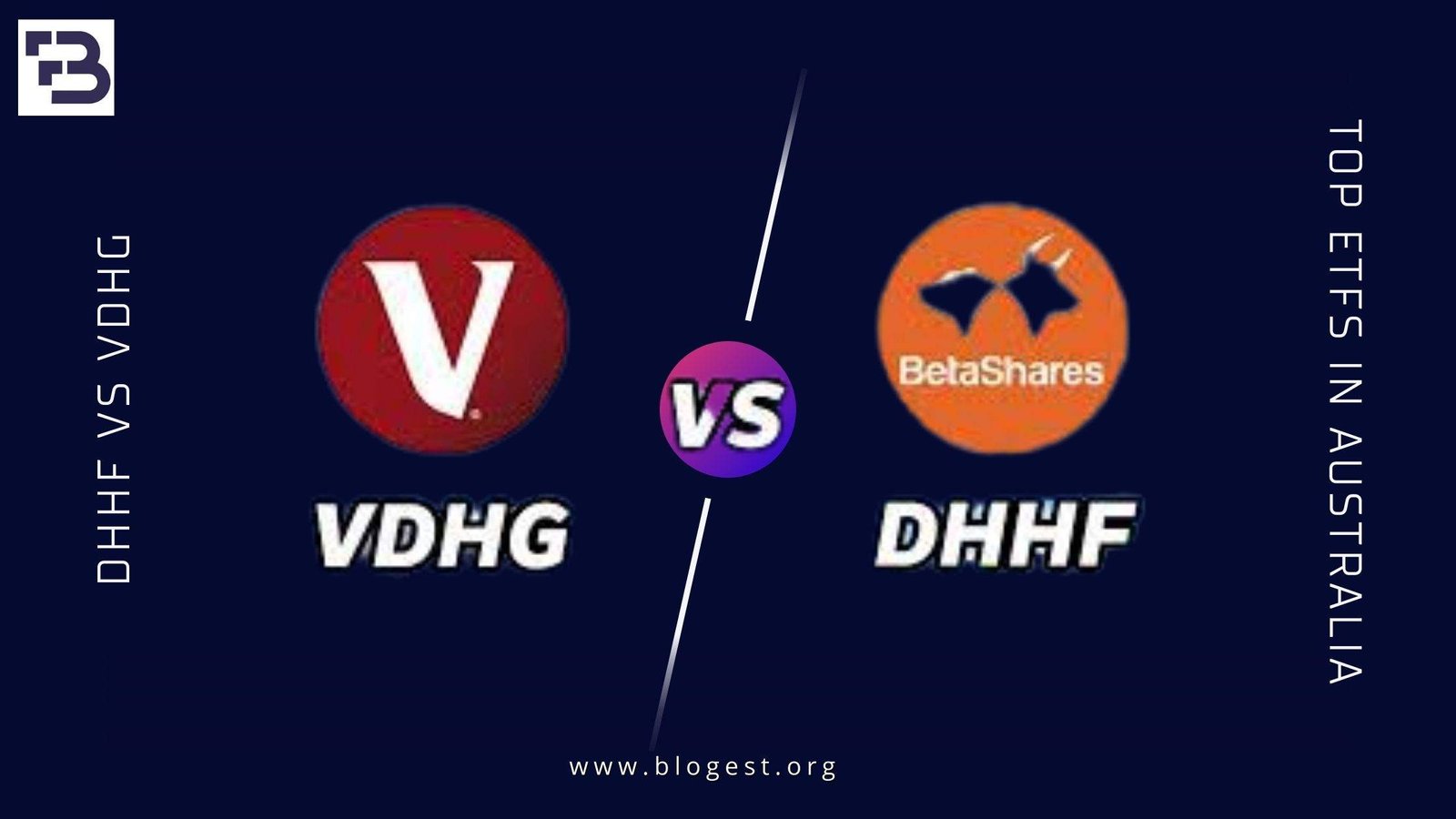DHHF vs VDHG, which one is better?
This blog will tell you that.
Investing is the single best thing you can do to secure your future. Investing a percentage of your salary or pocket money can add up with time and give great returns in the future.
But the question is where to invest.
Many investment instruments exist, like gold, bonds, shares, etc.
Here ETFs come to the rescue.
And if you are from Australia, then two ETFs, DHHF and VDHG, are in so much news. But which one is the better one?
VDHG from Vanguard or DHHF from beta share.
If you want a short answer, the DHHF’s 100% equity allocation aligns more with a long-term “high-growth” strategic asset allocation.
If you don’t have a strong tolerance for volatility or want to develop an income-focused portfolio, VDHG is worth examining.
On the surface, these ETFs appear to be identical, but significant variances must be addressed in light of your individual investing approach.
In this blog, we will remove this confusion and will tell you who is better off with the two ETFs.
What is ETF?
Let’s first start by discussing what ETF (exchange-traded fund) is. ETF is often termed as the ‘fund of funds. It is called an exchange-traded fund because it is traded like a stock on an exchange. It is an instrument that diversifies the investor’s money across various investment tools like shares, bonds, etc.
There is an adage, never put all your eggs in one basket, and ETF follows this principle. ETFs can be bought and sold just like regular stocks, and their function is similar to mutual funds.
However, ETFs can be structured to meet a definite goal. Depending upon your choice of return, you can mold your ETF as a high-risk high growth, low-risk low growth, balanced, etc.
Investment is the single most effective way to guarantee your future. Investing a portion of your pay or pocket money can mount up over time and provide significant rewards in the future. Yet the difficulty is where to put your money.
Several investment products are available, such as gold, bonds, and stocks.
ETFs, come in handy here.
What is VDHG ETF?
VDHG is Australia’s first all-in-one fund. It was listed in 2017.
VDHG exposes its investors to all types of companies, small, medium, or large equities at regional and international levels.
VDHG also invests in bonds (income assets) using a suit of Vanguard-managed funds.
VDHG’s seven currency-hedged and un-hedged underlying assets are all unlisted index funds managed directly by Vanguard. These seven funds give investors access to approximately 18,000 securities!
What is DHHF ETF?
DHHF ETF is a relatively new ETF. It was listed in 2019 and was said to be an alternative to VDHG.
DHHF promises higher growth by providing access to regional and international entities.
DHHF claims its ETF is good for long-term investors who want good returns.
It follows four broad-based passive ETFs, each investing in US, Australian, Developed Markets (excluding the US), and Emerging Markets stocks. This leads to exposure to over 8,000 small, medium, and big businesses in 60 countries.
VDHG VS DHHF: Which is Better?

Image Source: https://www.reddit.com/r/fiaustralia/comments/lr6wqt/vdhg_v_dhhf_a_comparison/
Now that you have a rough idea of the ETFs, here is a comparison between both ETFs based on specific parameters.
VDHG VS DHHF: Price
DHHF has an MER of 0.19%, and VDHG has an MER of 0.27%. Therefore DHHF is cheaper than VDHG.
However, their cost doesn’t justify their differences because the attributes of DHHF and VDHG are entirely different.
Here is a comparison of both of them.
| ETF Holdings | DHHF | VDHG |
| Shares of international companies | Yes | Yes |
| Shares of Australian companies | Yes | Yes |
| EMF (Emerging Markets Fund) | Yes | Yes |
| Small Companies Fund | No | Yes |
| Bond Funds | No | Yes |
| Hedged Currency Funds | No | Yes |
In the above table, you can see that DHHF and VDHG have different exposures. Therefore, both
VDHG VS DHHF: Asset Allocation
This is the main difference between VDHG and DHHF. VDHG has an asset allocation of 10%, and DHHF has 0%.
This is why investors seeking a diversified asset allocation choose VDHG over DHHF.
VDHG VS DHHF: Regional Exposure
Both VDHG and DHHF have almost the same regional exposure. However, VDHG, an allocation of 10% towards bonds, tends to be less concentrated toward Australian, international, and emerging market shares.
The allocation of DHHF is 38.4%, and VDHG is 34.3%.
VDHG VS DHHF: Performance
Usually, 5-plus years is ideal for comparing the performance of two ETFs. However, in the case of VDHG vs. DHHF, neither of them is listed for long enough.
But comparing their performance from one year’s perspective, in 2021, we found out that DHHF has a return of 17.57% and VDHG has a return of 14.03%.
We can see that DHHF has better returns than VDHG. This is because of DHHF’s 100% allocation to equities strategy.
Here is a chart showing the performance comparison of VDHG and DHHF
| As of 31/01/2022 | ASX: DHHF | ASX: VDHG | Vanguard High-Growth Index Fund | ASX: IVV (S&P500) |
| 1 Year | 17.57% | 14.03% | 13.98% | 33.90% |
| 3 Year | N/A | 12.55% | 12.53% | 21.67% |
| 5 Year | N/A | N/A | 10.55% | 18.23% |
| 10 Year | N/A | N/A | 11.60% | 14.57% |
VDHG VS DHHF: Final Verdict
The DHHF’s 100% equity allocation is more consistent with a “high-growth,” long-term strategic asset allocation.
VDHG is worth considering if you don’t have a high tolerance for volatility or want to build an income-focused portfolio.
These ETFs appear to be identical on the surface, but there are major differences that must be considered in light of your specific investing strategy.
Parting Words
ETFs are rewarding assets, and if you want to invest in them, then you should do it without any worry. Just make sure to do your research well.
This was all about VDHG vs DHHF. Both have their strengths and weakness, but they are worth trying.
Article Source: https://themoneypal.com/dhhf-vs-vdhg/
You May Like Also:





13 thoughts on “DHHF vs VDHG | Which One Is Better? Top ETFs in Australia”